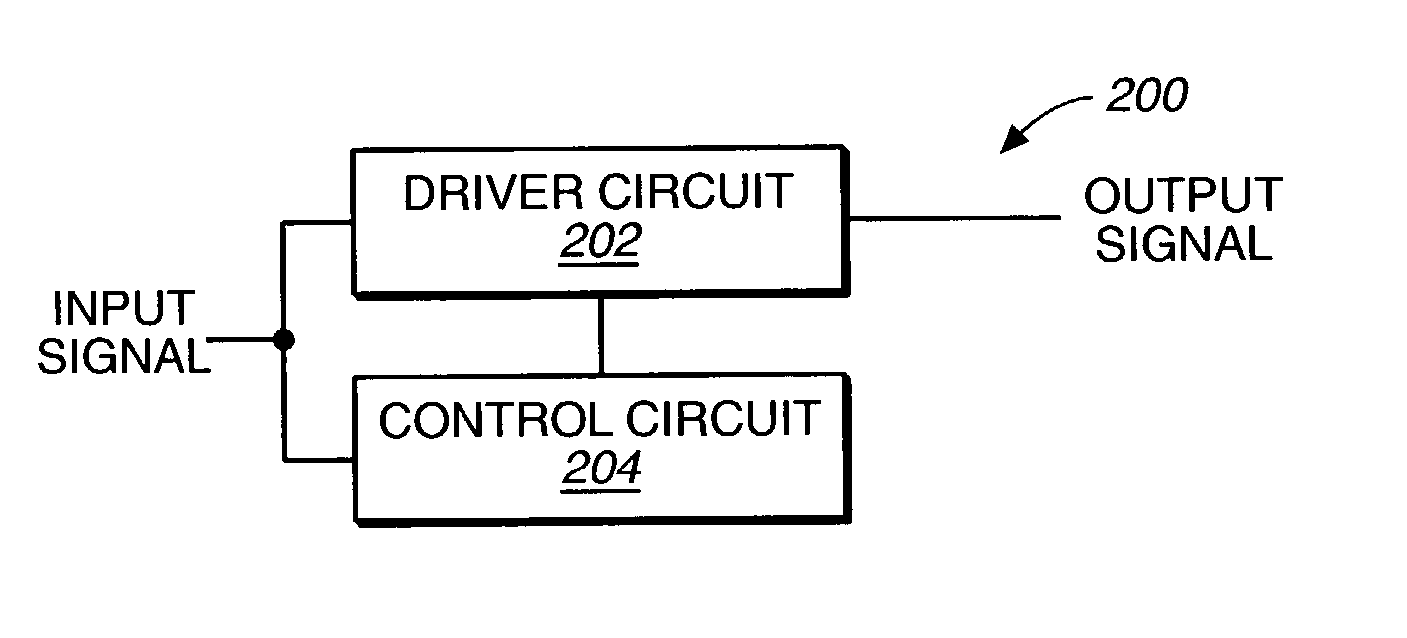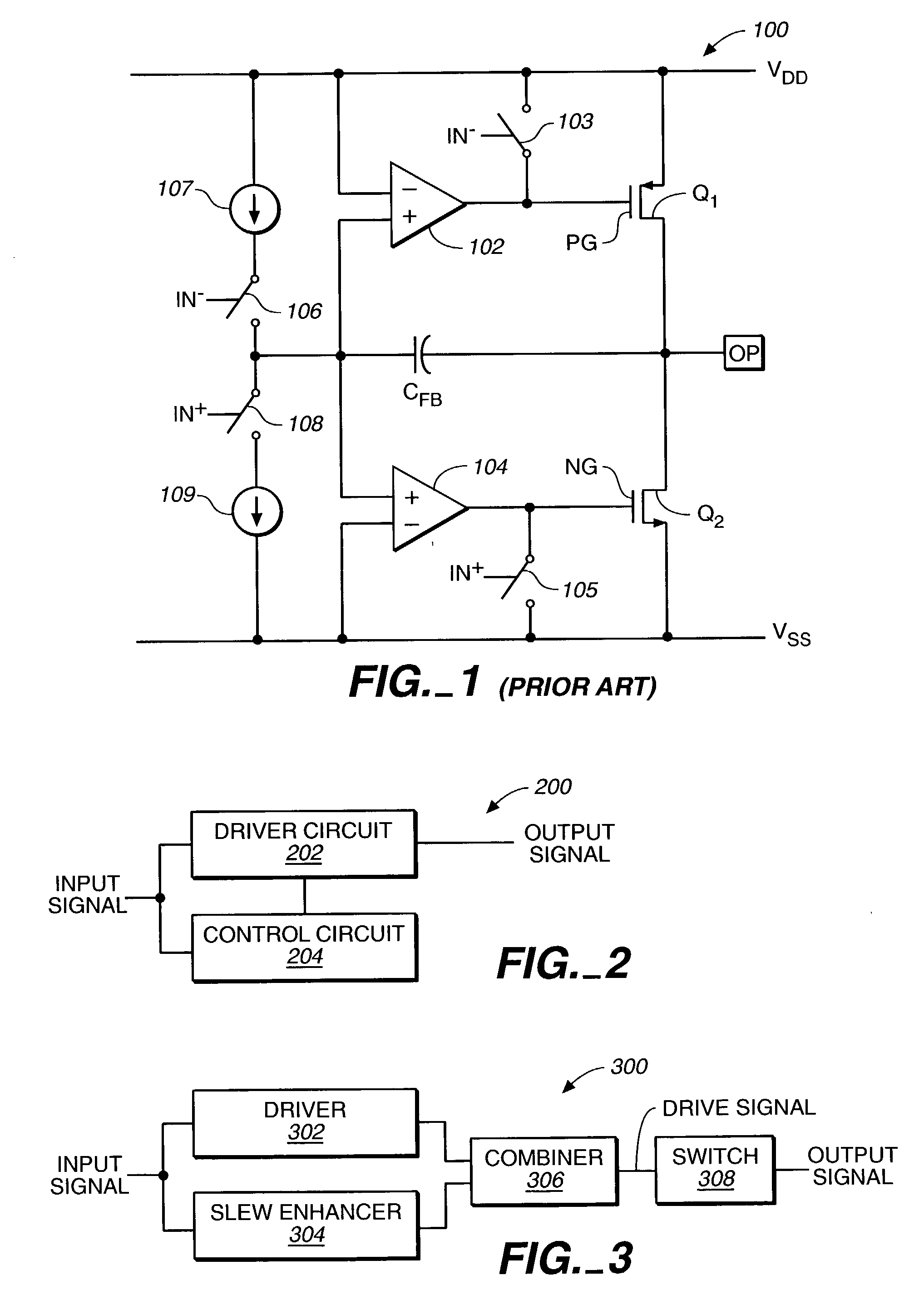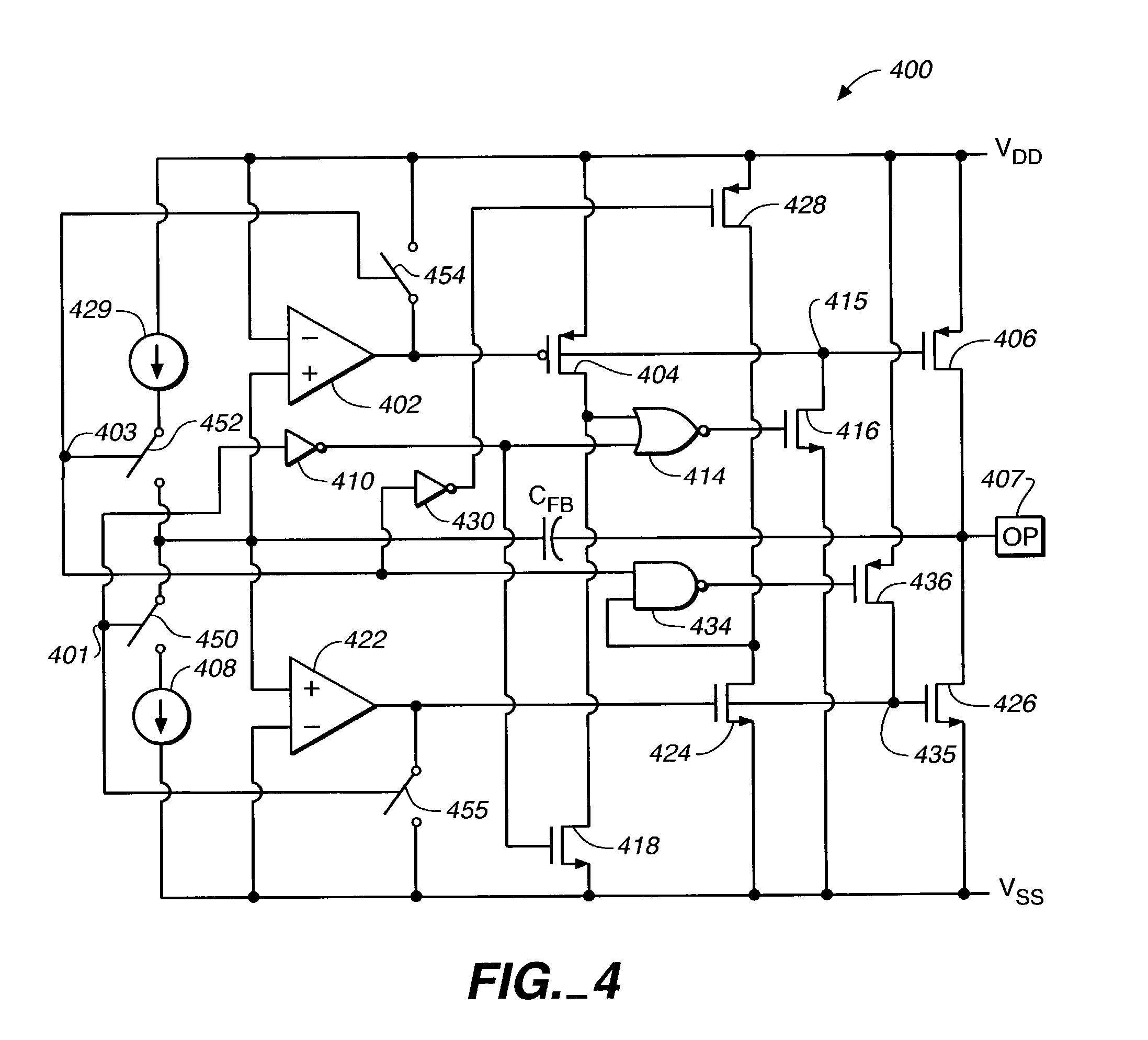Method and apparatus for slew control of an output signal
a technology of output signal and control method, which is applied in the direction of pulse manipulation, pulse technique, baseband system details, etc., can solve the problems of circuit designers often implementing complicated and expensive circuits, signal distortion may occur, and further deterioration
- Summary
- Abstract
- Description
- Claims
- Application Information
AI Technical Summary
Benefits of technology
Problems solved by technology
Method used
Image
Examples
Embodiment Construction
[0030] FIG. 1 is a schematic diagram illustrating a prior art output driver circuit.
[0031] FIG. 2 is a block diagram illustrating an exemplary preferred embodiment of the invention.
[0032] FIG. 3 is a block diagram illustrating another exemplary preferred embodiment of the invention.
[0033] FIG. 4 is a schematic diagram illustrating an exemplary preferred output driver circuit in one embodiment of the invention.
[0034] FIG. 5 is a schematic diagram of another prior art output driver circuit.
[0035] FIG. 6 is a diagram illustrating a generalized circuit for driving a signal to either of two logic levels as known in the prior art.
[0036] FIG. 7 shows timing diagrams of driver circuits described herein.
[0037] While the invention is susceptible to various modifications and alternative forms, a specific embodiment thereof has been shown by way of example in the drawings and will herein be described in detail. Those skilled in the art will appreciate that the features described below can be co...
PUM
 Login to View More
Login to View More Abstract
Description
Claims
Application Information
 Login to View More
Login to View More - R&D
- Intellectual Property
- Life Sciences
- Materials
- Tech Scout
- Unparalleled Data Quality
- Higher Quality Content
- 60% Fewer Hallucinations
Browse by: Latest US Patents, China's latest patents, Technical Efficacy Thesaurus, Application Domain, Technology Topic, Popular Technical Reports.
© 2025 PatSnap. All rights reserved.Legal|Privacy policy|Modern Slavery Act Transparency Statement|Sitemap|About US| Contact US: help@patsnap.com



